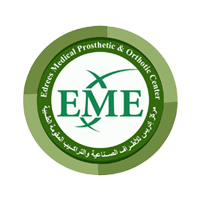The field of prosthetics has made tremendous advancements in recent years, providing improved mobility and quality of life for individuals with limb loss. However, the production of prostheses can be energy-intensive, relying heavily on machinery and materials that contribute to carbon emissions. As industries seek greener solutions, solar energy has emerged as a viable alternative to power the manufacturing process. This article explores how solar energy can be utilized in the production of prostheses, highlighting the benefits and challenges of this sustainable approach.
The Role of Solar Energy in Manufacturing
Solar energy is one of the most abundant renewable energy sources available, offering a clean and cost-effective way to generate electricity. By installing solar panels on manufacturing facilities, companies can harness the power of the sun to meet a significant portion of their energy needs. This is especially relevant in industries like prosthetics, where reducing operational costs and minimizing environmental impact are key priorities.
Using solar power in manufacturing can reduce reliance on fossil fuels, lower electricity costs, and contribute to a company’s sustainability goals. For prosthetic production facilities, solar energy can be used to power machinery, 3D printers, and heating systems required for shaping and molding prosthetic materials, making the entire production process more environmentally friendly.
How Solar Energy Supports Prosthetic Production
The production of prostheses involves several stages that can benefit from the use of solar energy. These stages include material preparation, 3D printing, assembly, and quality testing. Here’s how solar power can be integrated into each of these stages:
1. Material Preparation
The initial phase of prosthetic production involves preparing materials like plastics, metals, and resins. This process often requires heating, melting, and molding, which consumes significant energy. Solar power can be used to heat furnaces or other equipment required for processing raw materials, making this stage of production more sustainable. Solar-powered heating systems reduce electricity consumption from the grid, cutting down on costs and emissions.
2. 3D Printing
3D printing technology has revolutionized the production of prosthetic limbs, allowing for more customized and precise designs. However, 3D printers are energy-intensive, especially when running continuously to produce multiple parts. Solar energy can power 3D printers, ensuring that the manufacturing process remains eco-friendly without sacrificing efficiency. Additionally, solar-powered battery storage systems can store excess energy generated during peak sunlight hours, allowing production to continue even when the sun is not shining.
3. Assembly and Finishing
After the components of the prosthesis are printed, they must be assembled and finished. This stage may involve using small machinery, drills, and polishers, which also require electricity. By using solar energy, manufacturers can reduce their dependence on non-renewable energy sources for these tasks. Solar power helps maintain a consistent energy supply for the assembly line, ensuring that the production process runs smoothly.
4. Quality Testing
Quality testing is a crucial step in prosthetic production, ensuring that the final product meets safety and functionality standards. This often involves using specialized equipment to test the strength, flexibility, and durability of prosthetic limbs. Solar energy can power these testing devices, contributing to a fully sustainable production process. Additionally, the use of solar energy for lighting in testing areas helps minimize energy consumption further.
Benefits of Using Solar Energy in Prosthetic Manufacturing
The integration of solar energy into the production of prostheses offers several benefits:
- Cost Savings: By using solar power, manufacturers can significantly reduce their energy bills, making the production process more cost-effective. These savings can be passed on to customers, making prosthetics more affordable.
- Reduced Carbon Footprint: Solar energy is a clean power source, emitting no greenhouse gases during operation. Using solar power in prosthetic manufacturing helps reduce the carbon footprint of production facilities, contributing to global efforts to combat climate change.
- Energy Independence: Solar energy provides greater energy independence, reducing the reliance on grid power and protecting manufacturers from fluctuations in energy prices. This can be especially beneficial in regions with unstable power supplies.
- Corporate Social Responsibility: By adopting solar energy, prosthetic manufacturers can demonstrate their commitment to sustainability and social responsibility, which can enhance their reputation and attract environmentally conscious customers and partners.
Challenges in Implementing Solar Energy for Prosthetic Production
While the benefits of using solar energy in prosthetic production are clear, there are some challenges to consider:
- Initial Investment: Installing solar panels and integrating solar energy systems can require a significant upfront investment. However, this cost can be offset over time through energy savings and government incentives.
- Space Requirements: Solar panels require adequate space for installation, which may be a limitation for some manufacturing facilities. Rooftop installations or ground-mounted systems can address this issue, depending on available space.
- Weather Dependency: Solar energy generation depends on sunlight, which can be inconsistent in certain regions or seasons. Combining solar power with battery storage or using a hybrid system can help maintain a stable energy supply.
The use of solar energy in the production of prostheses represents a promising step towards a more sustainable and eco-friendly manufacturing process. By integrating solar power into various stages of production, manufacturers can reduce costs, lower their environmental impact, and contribute to a cleaner future. While there are challenges to overcome, the long-term benefits make solar energy a valuable investment for the prosthetics industry. As technology continues to advance, the adoption of renewable energy solutions like solar power will play a critical role in shaping the future of prosthetic manufacturing.

